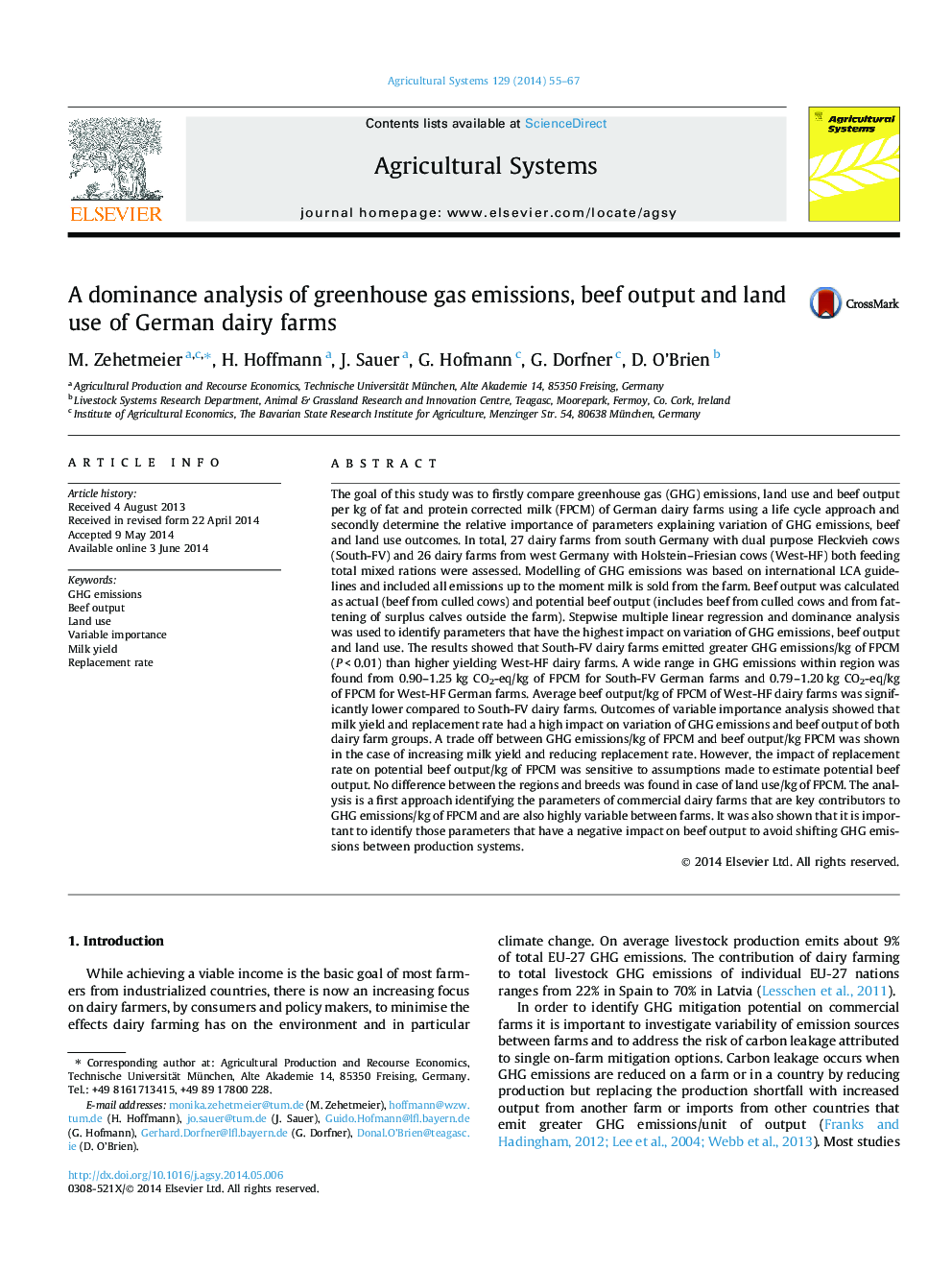| کد مقاله | کد نشریه | سال انتشار | مقاله انگلیسی | نسخه تمام متن |
|---|---|---|---|---|
| 4491225 | 1623241 | 2014 | 13 صفحه PDF | دانلود رایگان |
• We investigated GHG emissions, potential beef output and land use of dairy farms.
• We used dominance analysis to identify most important variables.
• Important variables contribute high to variation of investigated farm outcomes.
• Milk yield per cow and replacement rate were identified as important variables.
• Feed and nitrogen efficiency were identified as net GHG mitigation options.
The goal of this study was to firstly compare greenhouse gas (GHG) emissions, land use and beef output per kg of fat and protein corrected milk (FPCM) of German dairy farms using a life cycle approach and secondly determine the relative importance of parameters explaining variation of GHG emissions, beef and land use outcomes. In total, 27 dairy farms from south Germany with dual purpose Fleckvieh cows (South-FV) and 26 dairy farms from west Germany with Holstein–Friesian cows (West-HF) both feeding total mixed rations were assessed. Modelling of GHG emissions was based on international LCA guidelines and included all emissions up to the moment milk is sold from the farm. Beef output was calculated as actual (beef from culled cows) and potential beef output (includes beef from culled cows and from fattening of surplus calves outside the farm). Stepwise multiple linear regression and dominance analysis was used to identify parameters that have the highest impact on variation of GHG emissions, beef output and land use. The results showed that South-FV dairy farms emitted greater GHG emissions/kg of FPCM (P < 0.01) than higher yielding West-HF dairy farms. A wide range in GHG emissions within region was found from 0.90–1.25 kg CO2-eq/kg of FPCM for South-FV German farms and 0.79–1.20 kg CO2-eq/kg of FPCM for West-HF German farms. Average beef output/kg of FPCM of West-HF dairy farms was significantly lower compared to South-FV dairy farms. Outcomes of variable importance analysis showed that milk yield and replacement rate had a high impact on variation of GHG emissions and beef output of both dairy farm groups. A trade off between GHG emissions/kg of FPCM and beef output/kg FPCM was shown in the case of increasing milk yield and reducing replacement rate. However, the impact of replacement rate on potential beef output/kg of FPCM was sensitive to assumptions made to estimate potential beef output. No difference between the regions and breeds was found in case of land use/kg of FPCM. The analysis is a first approach identifying the parameters of commercial dairy farms that are key contributors to GHG emissions/kg of FPCM and are also highly variable between farms. It was also shown that it is important to identify those parameters that have a negative impact on beef output to avoid shifting GHG emissions between production systems.
Journal: Agricultural Systems - Volume 129, July 2014, Pages 55–67
